Updated on June 29, 2020
To all adventure lovers out there, specifically the ones who enjoy walking a country's trails, Northern Vietnam is known for being rugged, beautiful and full of off-the-beaten-track charm. Here is our top 10 hiking trails in Northern Vietnam.
1. Ba Be National Park
Designated ‘national park’ in 1992,
Ba Be does not disappoint. Located about 200km in the North-Northeast of Hanoi, it is an excellent choice for travellers who like to go off the beaten track, in local villages still authentic, hike through the jungle, and finally take a dip in the lake at the end of the day.
The landscape consists in limestone karst mountains covered with greenest forests, surrounding the largest freshwater lake of the country, and amazing caves within the mountain. In addition to a rich biodiversity, the park is home to several ethnic minority groups. The largest community is the Tay that make their living farming and fishing in the park and mostly live in traditional wooden stilt houses.
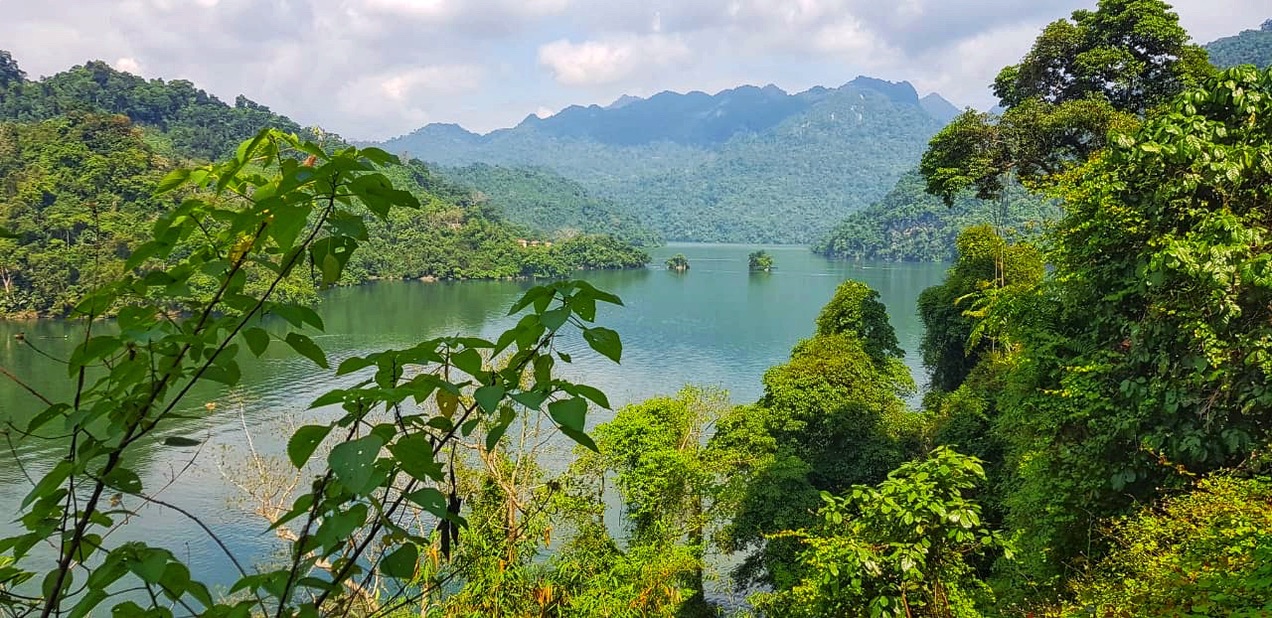 2. Quang Uyen Mountain in Cao Bang
2. Quang Uyen Mountain in Cao Bang
On your way to Ban Gioc Waterfall in the very north-eastern border of Vietnam with China, lies
Quang Uyen district in the province of Cao Bang, about 300km from Hanoi. This attractive area is home to several villages built at the foot of the mountain, lost in between rice fields and wild flora.
Our best advice is to start the day early and climb the mountain before breakfast to see the sunrise on the valley below. An outstanding view that will leave you speechless without a doubt. It is worth noting that the ascent can seem difficult for beginners, it involves climbing a mountain and without any path. So put on good shoes and start climbing in the forest. You will then arrive at the summit and be rewarded with a breath-taking view of the Quang Uyen district in the first light of day.
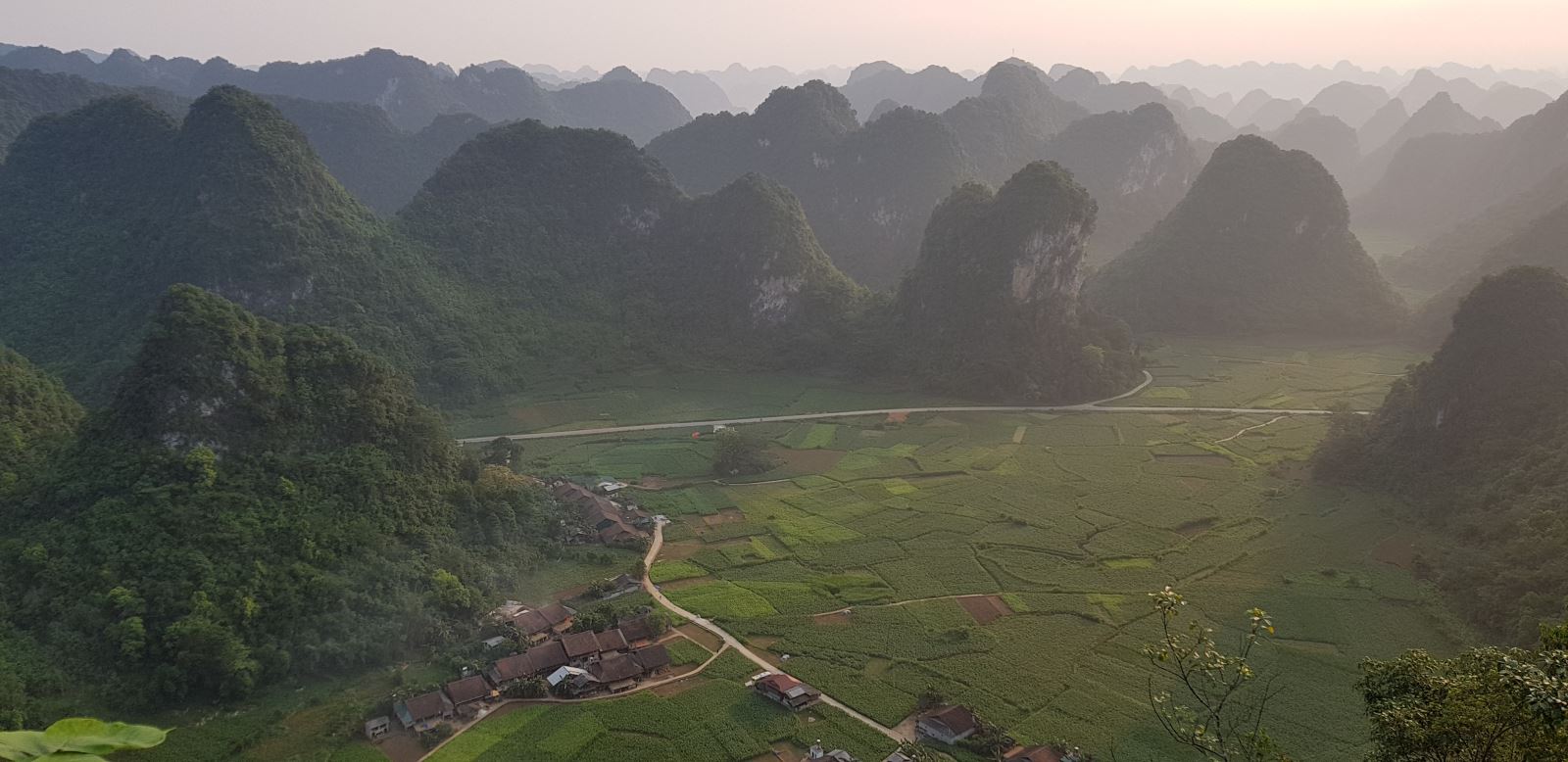 3. Ha Giang (Tay Con Linh, Ma Pi Leng, Ma Le)
3. Ha Giang (Tay Con Linh, Ma Pi Leng, Ma Le)
Some of the most incredible views you will find in the country. The
province of Ha Giang has risen to prominence as the “final frontier” of Vietnam, and remains truly untouched. Located 300km in the north-northwest of Hanoi, Ha Giang is a remote and rugged land filled with spectacular landscape and scenery in every direction. The region shares much with Southern China across the border, with many of the ethnic groups living here existing on both sides of the border. The best hiking and trekking routes according to us are Tay Con Linh, Ma Pi Leng and Ma Le.
Tay Con Linh is the tallest mountain in Ha Giang rising to a height of 2427m above sea level. It is slightly shorter than Fansipan over in Sapa, but the trek to the summit is far more challenging, making it a better mountain for experienced climbers and travellers looking for a physical challenge.
Ma Pi Leng, also known as the Happiness Road, is one of the most beautiful roads in Vietnam. It was built to link the towns of Dong Van and Meo Vac at 2000m of altitude. The pass offers mind-blowing panoramic views and encounters with local people working on their small fields up the mountains.
The village of
Ma Le, in Dong Van district, hosts a traditional market on the weekends which constitutes a great opportunity to bring people together. Mainly inhabited by Day, Lo Lo, Pu Peo or Chai ethnic families, everyone travels on the mountains to reach this meeting point. Walk the same path and enjoy the view!
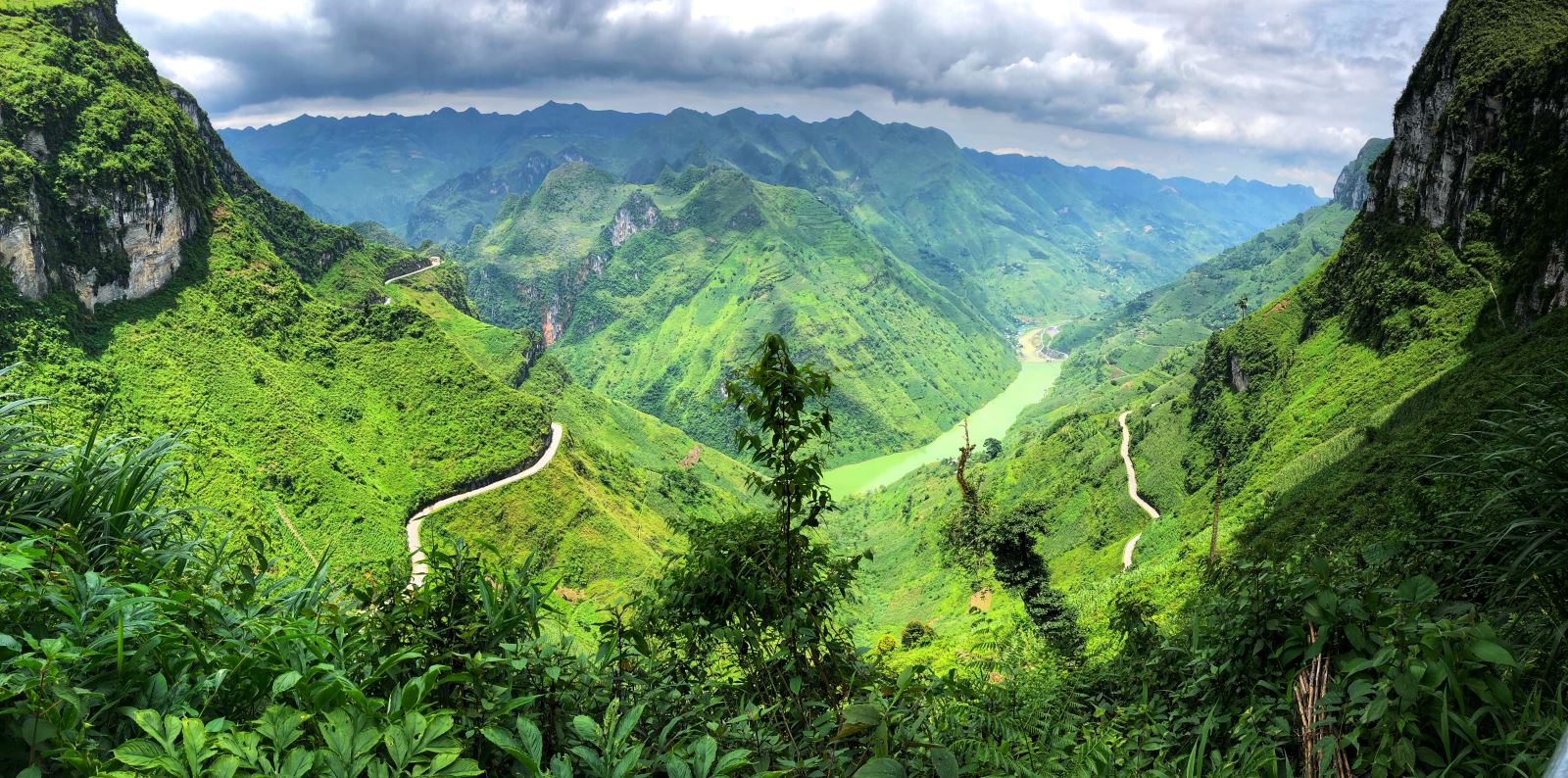 4. Cat Ba National Park
4. Cat Ba National Park
Lying peacefully on the largest island in Lan Ha Bay, south of Halong Bay,
Cat Ba National Park possesses all the enchanting beauty of the surrounding area, combining rugged karst peaks, thick forest jungles and calm, clear waters. Nearly 50% of the island is made up of the national park which gives it an undeniable natural beauty. Trekking through the park is a popular activity due to the fresh, clean air, rich forest and stunning views. It can also be combined with a motorbike tour through the island.
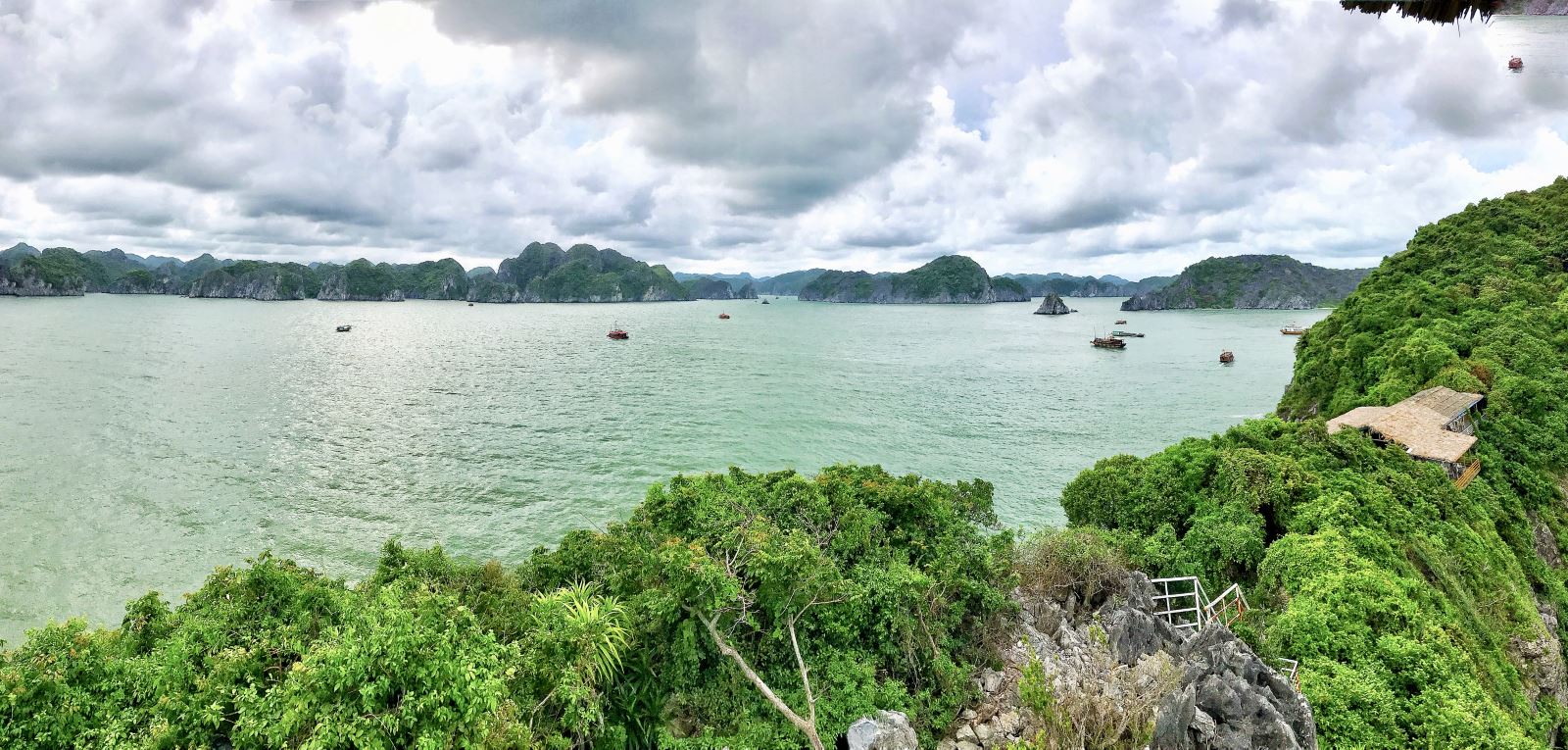 5. Fansipan Peak in Sapa
5. Fansipan Peak in Sapa
Sapa needs no further introduction as the most popular destination to see terraced rice fields in the northwest of Vietnam. However, some may ignore that Sapa was built at the foot of the highest mountain of Vietnam,
Fansipan, that culminates at 3143m of altitude.
The rapid expansion of the city is mainly due to the opening of the Sun World Fansipan Legend’s suspended cable car system, departing right from the city centre. But true adventurers will disregard this option and hike to the top of the mountain! Powerful sensations along the way and views you will not want to forget.
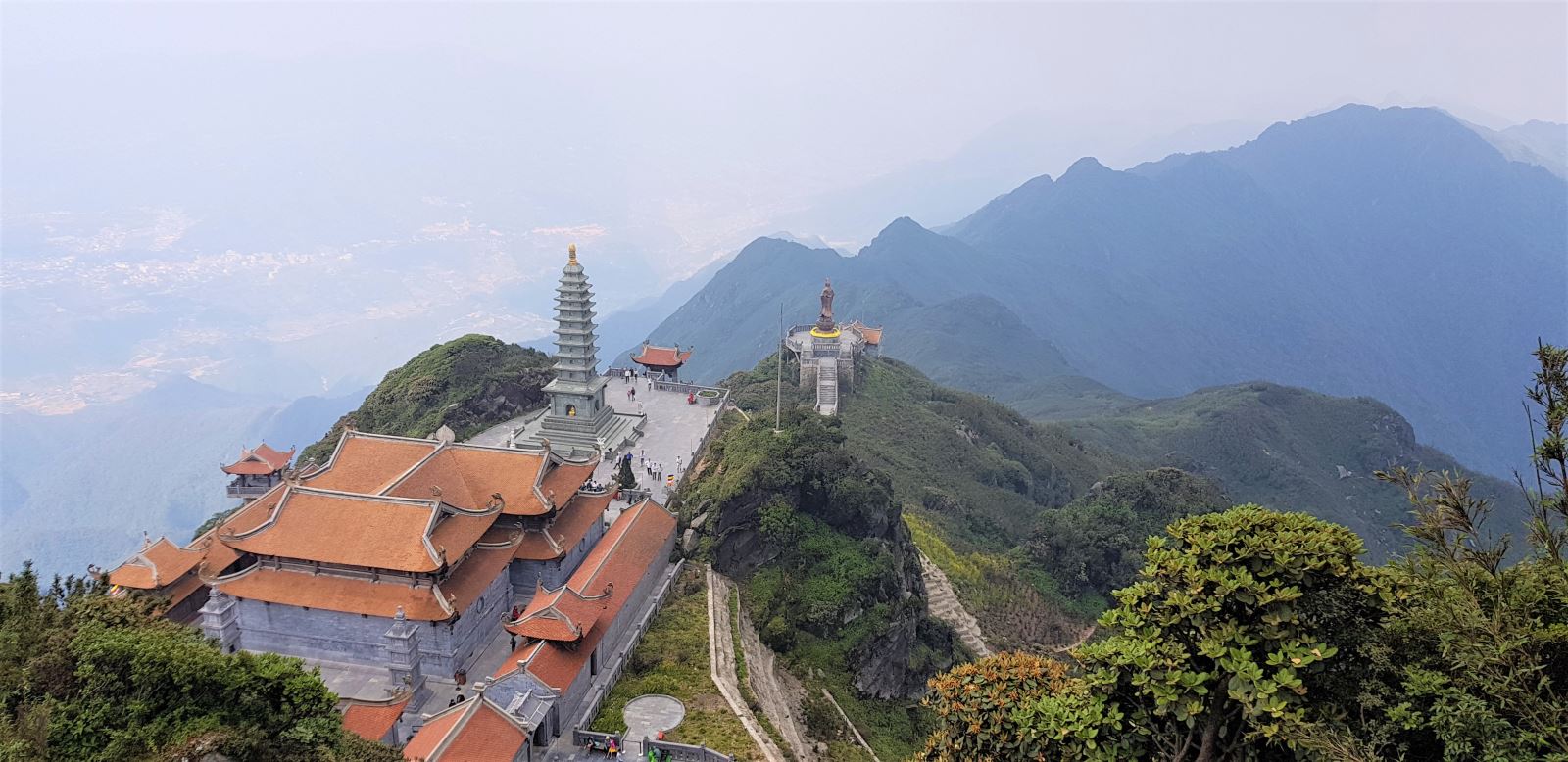 6. Sin Suoi Ho village, Putaleng, Pusilung mountain, Lai Chau
6. Sin Suoi Ho village, Putaleng, Pusilung mountain, Lai Chau
Ethnic Mong village located on the mountain peak on the other side of Fansipan, the road to reach
Sin Suoi Ho runs more than 30km from Lai Chau city along wavy roads, tottery slopes, and steep slants into the vast of fanciful clouds, promising an unspoiled, rustic destination. It attracts more and more visitors thanks to its natural scenery which includes wild sunflowers, terraced fields, majestic waterfalls and unique cultural characteristics.
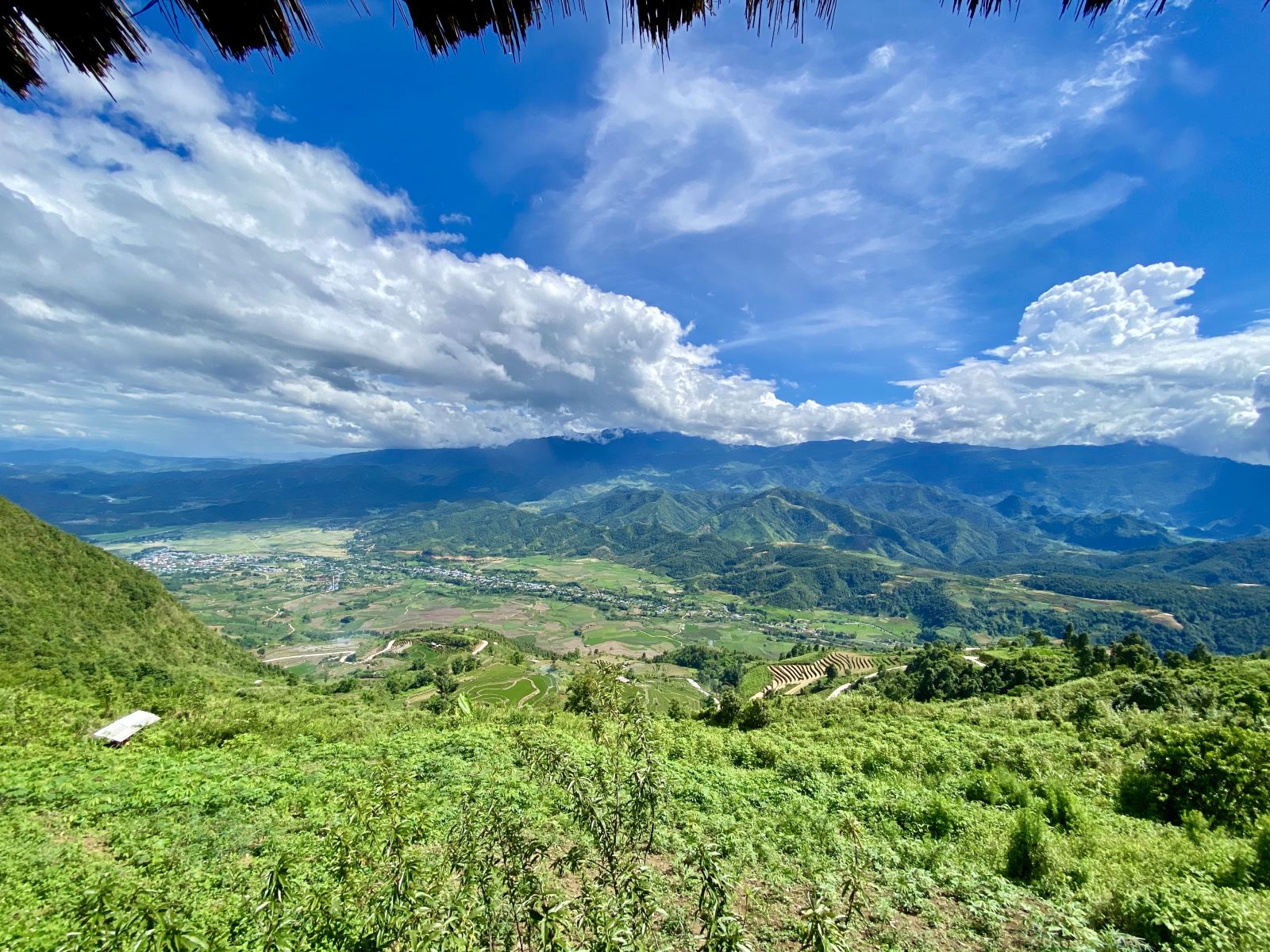 7. Pu Luong Nature Reserve
7. Pu Luong Nature Reserve
This enchanting valley is home to the ethnic Thay people who established themselves there long ago after one glance. Only 150km in the south-southwest of Hanoi,
Pu Luong’s serenity contrasts with the capital’s incessant pace. Take a walk along the valley floor or in the foothills to get up close with the flora and fauna of the area. Listen to the waterwheels and forest sounds, wave at farmers and grazing water buffalo, and snap pictures of the greenery and wildlife.
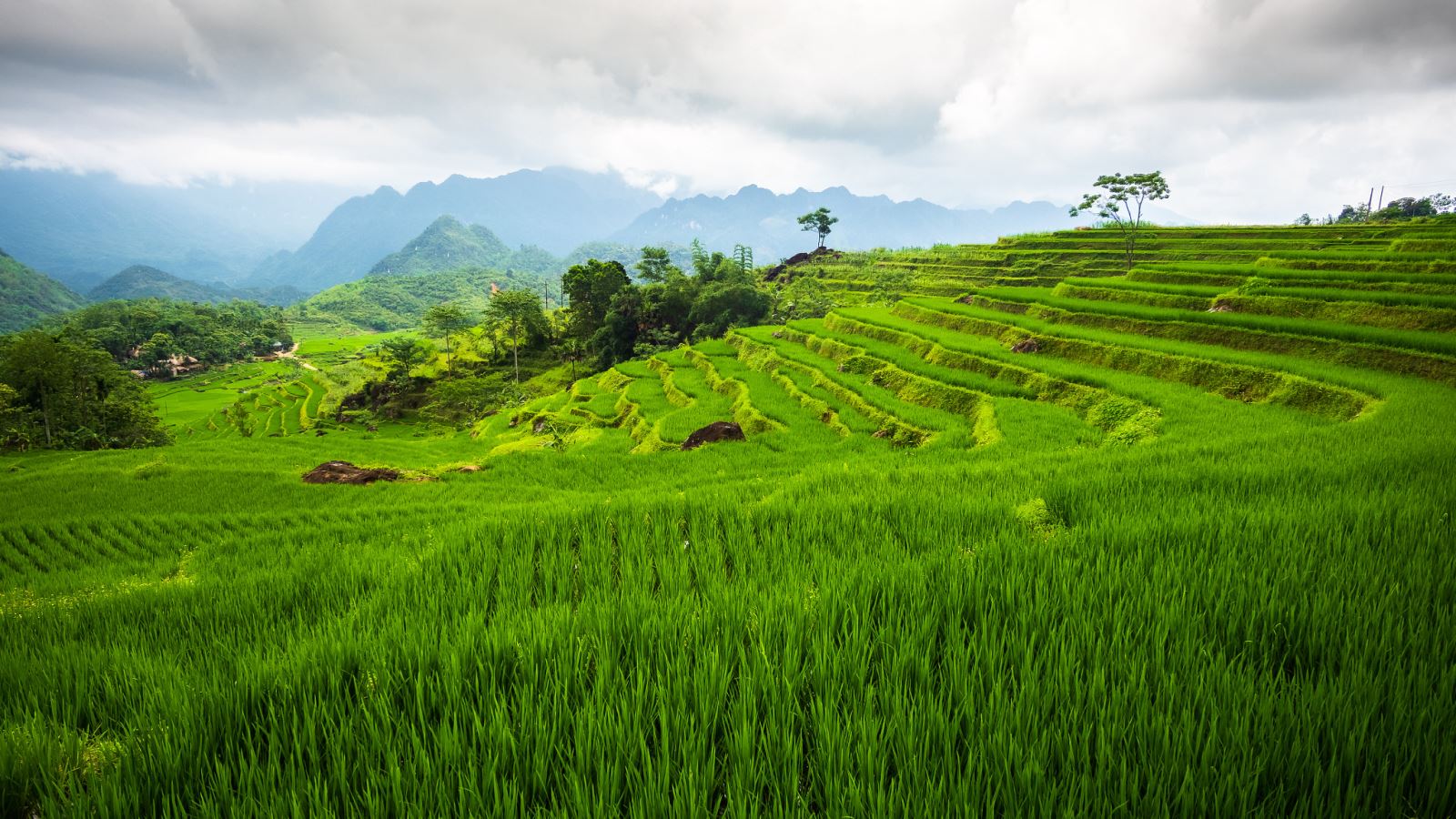 8. Mu Cang Chai terraced rice fields
8. Mu Cang Chai terraced rice fields
About 300km in the north-northwest of Hanoi, before Sapa, you can find the most majestic terraced rice fields of the country.
Mu Cang Chai is a mountainous province where rice terraces cover more than 2200 hectares of land. 500 of those hectares are already designated National Heritage Site by the Vietnam’s Ministry of Culture, Sports and Tourism since 2007. That land is shared by the three villages — La Pan Tan, Che Cu Nha and De Xu Phinh — and are must-see spots for any traveller in the region.
Tip for travellers: In summer time the terraces have young green rice stems. Autumn is harvest season so the crops have turned a beautiful golden yellow. Winter they are filled of water mirroring the sky. And once spring comes, the farmers are in the fields planting a new crop.
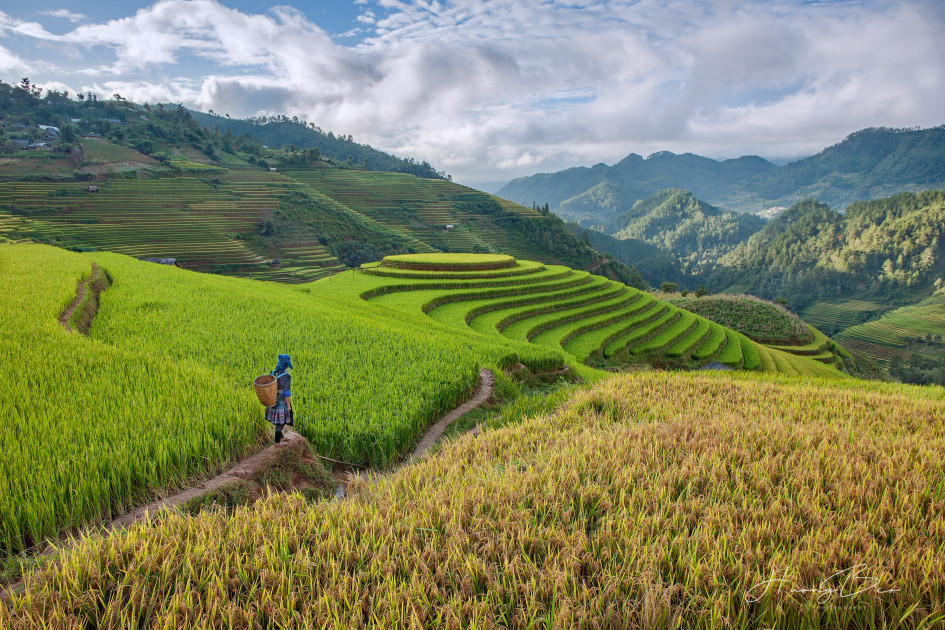 9. Cuc Phuong National Park
9. Cuc Phuong National Park
The oldest national park in Vietnam – established in 1962 –
Cuc Phuong is located 120km southwest of Hanoi next to the province of Ninh Binh. Covered in a dense forest surrounded by limestone mountains, rice fields and occasional stilt houses of the Muong ethnic community, the park is home to some of southeast Asia’s rarest animals and plants.
Popular trails will lead you to several ancient trees, caves and Muong villages, however, a guided tour is the best and most informative way to get the most out of both short and long treks.
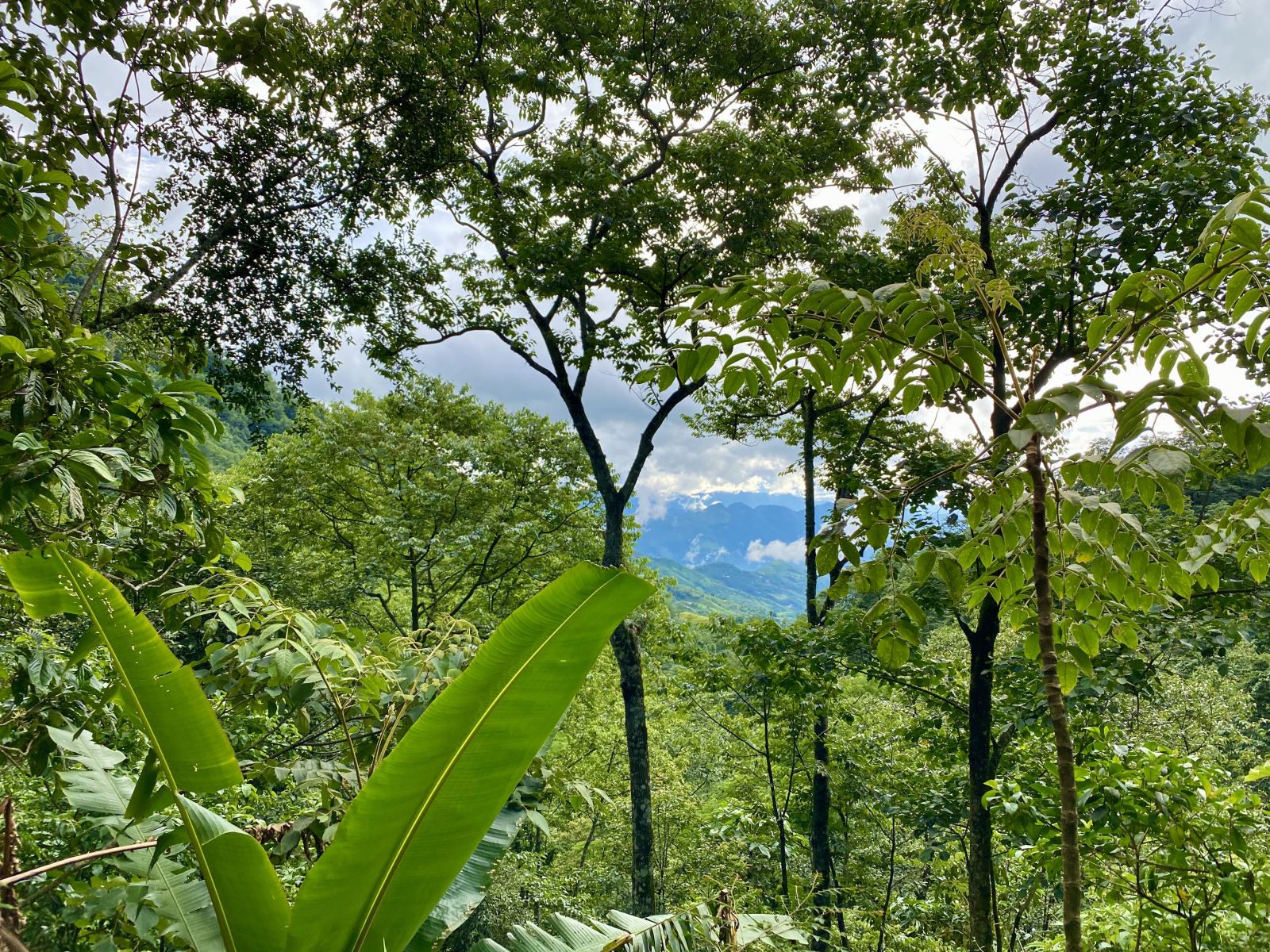 10. Bach Moc Luong Tu Mountain
10. Bach Moc Luong Tu Mountain
Fourth tallest mountain in Vietnam, with an altitude of 3046m from sea level,
Bach Moc Luong Tu is a very attractive adventurous destination for visitors who enjoy trekking and hiking. It lies between Lao Cai and Lai Chau, right under the Chinese frontier, and travellers like to come here to simply see the clouds. Watching the sunrise in the clouds has become the trademark of Bach Moc. The scenery always makes it worth the effort without hesitation.
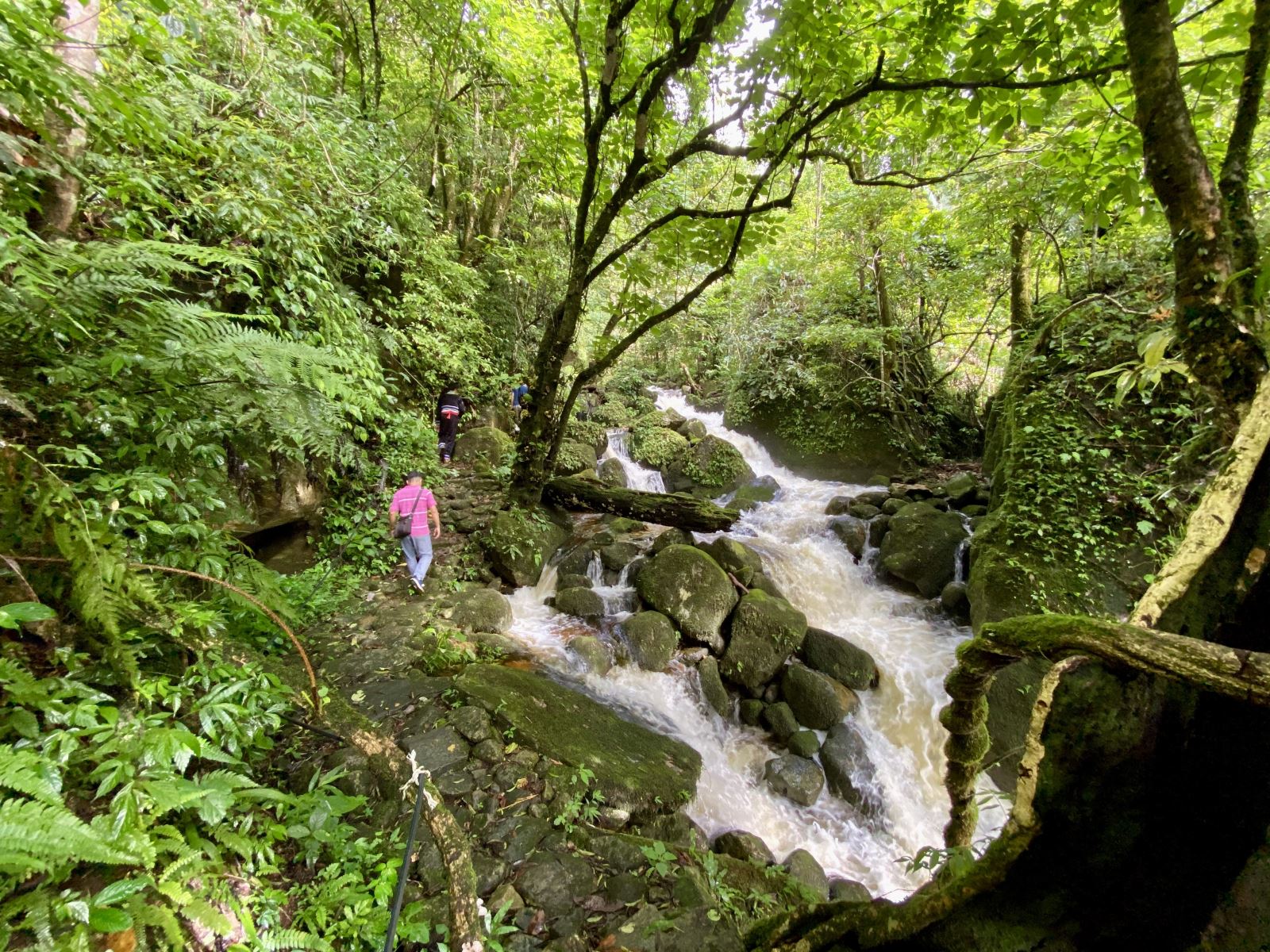
For any further information or query, hesitate no longer and
contact us!